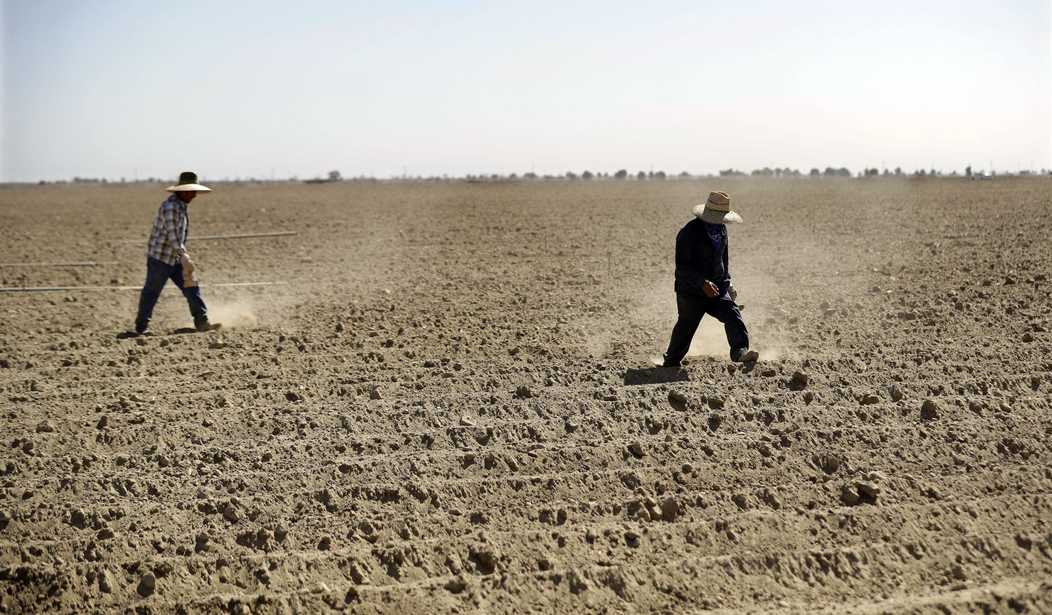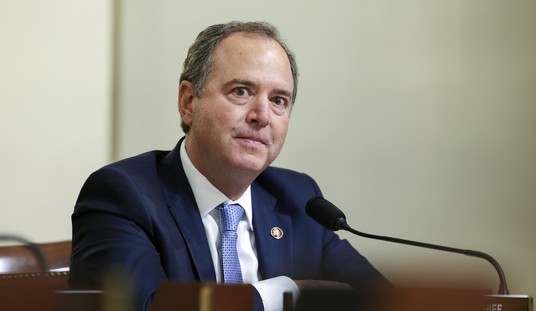Modern American agriculture has wrought miracles over the past 70 years. Conventional farm production per acre and overall nearly tripled, corn (maize) production increased 500% from 20% less land – and farmers used less water, less fuel, less fertilizer, and fewer pesticides and other chemicals for every bushel of food they harvested. They did all this using hybrid and genetically engineered seeds, tractors guided by GPS, equipment that can space seeds precisely to the inch and apply chemicals in amounts suited to soil characteristics that can change every few feet, and numerous other high-tech advances.
By using weed control chemicals, they avoid having to till and break up the soil, protecting soil organisms and dramatically reducing erosion, conserving soil moisture, sequestering carbon, saving time and tractor fuel, and allowing more land to be conserved as wildlife habitat instead of being planted in crops.
It’s thus surprising and troubling that environmentalist groups continue to attack the foundations of that success – especially GMO seeds and safe, effective, repeatedly tested, constantly monitored chemicals like glyphosate and neonicotinoid pesticides.
Another long-term target is atrazine, used to prevent the growth of broadleaf and grassy weeds among corn, sorghum, soybeans, and sugarcane, on golf courses and lawns, and along highways. It is the second most widely used herbicide, after glyphosate (Roundup) and controls glyphosate-resistant weeds. Over a dozen government studies since it was first introduced in 1958 have concluded it is safe for humans, animals and the environment.
The Center for Biological Diversity and other groups opposed to synthetic chemicals nevertheless sued the Environmental Protection Agency, claiming endangered species had not been properly considered during the pesticide review process. The courts gave EPA limited time to analyze possible effects on listed species and determine whether there is “moderate” or “strong” evidence that species and habitats on the Fish & Wildlife Service (FWS) “threatened or endangered” list (as well as candidates for listing) will likely be killed or otherwise adversely affected by commonly used herbicides and insecticides.
Recommended
Once EPA finishes its “biological evaluation” of each chemical, it will pass the baton to the FWS for more in-depth, but still insufficient analyses of effects on each species – also under tight court deadlines.
Faced with a court-ordered deadline and lacking the data, funding, and personnel for adequate evaluations of each listed species, EPA resorted to satellite imagery, statewide crop and atrazine use data, computer models, algorithms, extrapolations, and best guesses – plus available toxicity studies of rats, hamsters, other lab animals, and plants tested for the pre-emergent weed control chemical’s effectiveness. Data were not available (or were not used) at the county level, and certainly not at the farm or habitat level.
It produced a document claiming that 1,013 species and 328 endangered or threatened habitats are “likely to be adversely affected” by somehow encountering atrazine if it is inadvertently sprayed on them, small amounts “drift” into their habitats, or animals wander into a sprayed yard, farmer’s field or golf course.
These numbers represent most of the endangered or threatened species and critical habitats in the continental United States. The numbers would have been higher, except that, as EPA notes, atrazine manufacturers “committed to limit use of atrazine products” to the continental USA.
Ultimately, the agencies must decide whether to let current rules stand – or restrict or ban atrazine nationwide, regionally or near some or all of the species’ habitats and occasional stomping grounds.
EPA’s list includes 36 amphibians, 207 aquatic invertebrates, 190 fish, 47 reptiles, 108 birds, 99 mammals, 160 insects and invertebrates, and 948 plants. At least 8 of the species are already extinct, and dozens more live in the mountaind, deserts, and other areas that will likely never be touched by atrazine.
It’s a commendable effort – may be the best possible under the circumstances. It’s just not good enough, not for decisions with such monumental, far-reaching implications for America’s agriculture, especially since these evaluations are likely to be grounds for many more lawsuits against other vital chemicals.
Agency findings are presented in complex equations, over 100 pages of explanations of data and methodologies, and mind-numbing, almost incomprehensible spreadsheets that can involve over 1,800 rows and 30 columns. They’ll probably impress citizens and courts, politicians and journalists with the expertise, precision, and detail they supposedly reflect. But in reality, in the end, it’s mostly GIGO: multiple uncertainties in, multiple black-box analyses conducted, multiple faulty conclusions out.
The EPA analysis begins with species whose actual populations and presence in specific parts of possible ranges and habitats are mostly unknown. It then utilizes statewide crop planting and atrazine use data, averaged out and applied to possible habitats and individual plants or animals – which as individuals or a species may react very differently to different amounts of atrazine, and may contact them as direct or drifting spray, diluted promptly or over weeks in soil or water, ingested or contacting the skin.
Other unknown factors include the number of sprays per year; by hand, tractor, or aircraft; wind speed and direction and ambient temperature at the time of spraying; distance to habitat or individual plant or critter; amounts actually making contact over time; and whether an individual or species reacts to some unknown amount of atrazine the same way a laboratory animal did, with lethal or sublethal effects.
Even assuming a wildly optimistic 90% confidence level for each of these 12-15 or more unknowns, calculating the ultimate “strongest” evidence of harmful impacts requires multiplying the 90% (0.9) confidence for each element – thus 0.9 x 0.9 twelve or more times. The best possible scenario ends up being 28% or less confidence that the agency conclusions are valid.
That is useless and unacceptable. Decisions affecting our farms produce and dinner tables must not be made so cavalierly, on the basis of such patently insufficient evidence and rank guesswork.
But suppose they do ban atrazine. What guarantees will we have that this will prolong the existence of species that are already marginal and threatened by countless other human and natural factors? None.
And what next for conventional farmers? There is no substitute for atrazine or other modern herbicides, which are more effective, less toxic, and more biodegradable than their predecessors. In their absence, corn yields would decline nearly 40% – and growers would have to control weeds by hand (by thousands of migrant workers and their children) and by regularly tilling their fields. Food prices would soar.
Tilling means tractor mileage and fuel would skyrocket, crops would need far more water and irrigation, soils would lose their integrity and many organisms, carbon sequestration would plummet, and millions of tons of farmland would erode annually. Millions more acres would have to be planted to get today’s corn and other yields – and much of that acreage would come from land that is now wildlife habitat.
It’s the “precautionary principle” at its very worst – always focusing on alleged risks of using chemicals – never on the risks of not using them; always highlighting risks a technology might cause, but ignoring often far greater risks it would reduce or prevent.
Finally, if environmentalists, courts, and regulators truly are concerned about chemical threats to these and other species, they would not look only at conventional, synthetic chemicals – but at organic chemicals.
Atrazine has an LD50 of 3090 for rats, meaning it takes 3,090 milligrams per kilogram of body weight to kill half of a test group of rats that ingest it orally. Copper sulfate used on thousands of organic farms is ten times more toxic: an LD50 of 300. It is deadly to fish, hugely harmful to avian reproductive systems, and highly toxic to humans. The LD50 for rotenone is 132; a little bit will kill every fish in your favorite woodland pond. Pyrethrin (LD50: 200-2,600 mg/kg) and neem oil (LD50: 3,540) positively slaughter bees! Yet they (and more such nasties) are approved for organic farming all over the US, EU, and world.
When will environmentalists sue to have dangerous organic pesticides banned? When will courts and federal agencies initiate studies of their effects on these 1,795 threatened and endangered species?
It’s time we all focused on how and where atrazine is actually used – and whether any endangered species would actually be exposed to it (and harmed by it) under conditions of actual use. If you want your voice heard, submit your comments to docket number EPA-HQ-OPP-2020-0514 by February 19.
Paul Driessen is senior policy advisor for the Committee For A Constructive Tomorrow (www.CFACT.org) and author of books, reports, and articles on energy, environmental, climate, and human rights issues.

























Join the conversation as a VIP Member